Trending
These were the 10 biggest new real estate projects of 2017
The outer boroughs dominated this year
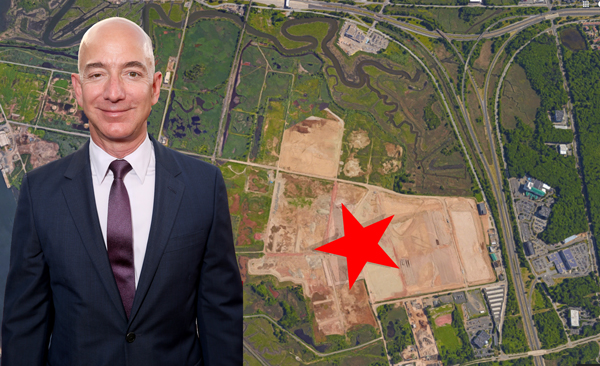
You should expect to see some giants rising in the outer boroughs over the next few years. A majority of the largest development projects started this year are located in Brooklyn and Queens, according to plans filed with the city’s Department of Buildings. The biggest project for which plans were filed with the city this year is an Amazon-anchored warehouse in Staten Island that will span more than 2 million square feet. The Real Deal compiled a list of the largest buildings planned for New York City, ranking projects filed with the DOB in 2017. Here are the top 10 biggest projects proposed this year, ranked by square footage:

Amazon’s Jeff Bezos and 546 Gulf Avenue (Credit: Getty Images and Google Maps)
1) 546 Gulf Avenue, Staten Island Matrix Development Group is planning a 2.3 million-square-foot commercial manufacturing building in the Bloomfield section of Staten Island. In June, Amazon announced that it would take 975,000 square feet at the warehouse for its first-ever distribution center in New York City. The two-story building is part of the New Jersey-based developer’s Matrix Global Logistics Park, New York YIMBY reported. The project will eventually span 3.5 million square feet. The first phase of the project, at 566 and 586 Gulf Avenue, was part of TRD’s roundup of the largest developments started in 2016.
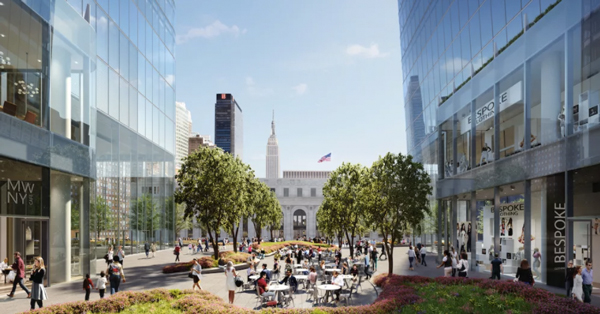
Rendering of Two Manhattan West (Credit: Brookfield via Curbed)
2) 401 West 31st Street, Manhattan In November, Brookfield Property Partners filed plans for a 59-story, 1.75-million-square-foot office tower at 401 West 31st Street. The project, known as Two Manhattan West, is part of the developer’s 7-million-square-foot, mixed-use development known as Manhattan West. Construction on One Manhattan West, a 62-story office tower, is underway and Brookfield recently completed the $350 million redevelopment of 5 Manhattan West, a 16-story office building. Two Manhattan West’s design mimics that of its under-construction sibling One Manhattan West.
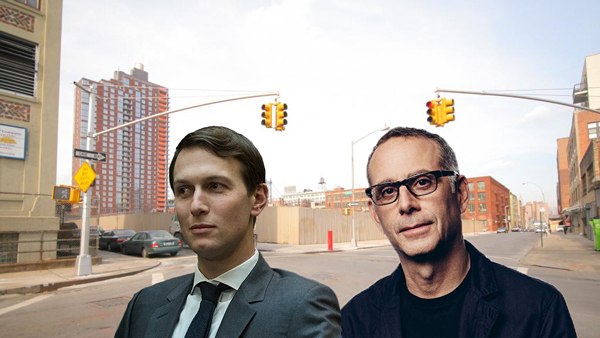
The current parking lot at 85 Jay Street, Jared Kushner and Morris Adjmi (Credit: Getty Images and LinkedIn)
3) 85 Jay Street, Brooklyn Kushner Companies, along with CIM Group and LIVWRK, plan to build a 21-story residential building at 85 Jay Street. The building will span 874,149 square feet and feature 737 apartments. The companies bought the site from the Jehovah’s Witnesses last year for $345 million, as well as the nearby Watchtower building at 25-30 Columbia Heights for $340 million.
4) 52-03 Center Boulevard, Queens In October, TF Cornerstone proposed a 776,624-square-foot residential building in Long Island City. The 56-story, 800-unit building will rise 587 feet and is part of TF Cornerstone’s Hunter’s Point South Towers project, a two-building complex that will feature 1,193 apartments. According to Real Estate Weekly, 796 of those units will be affordable.
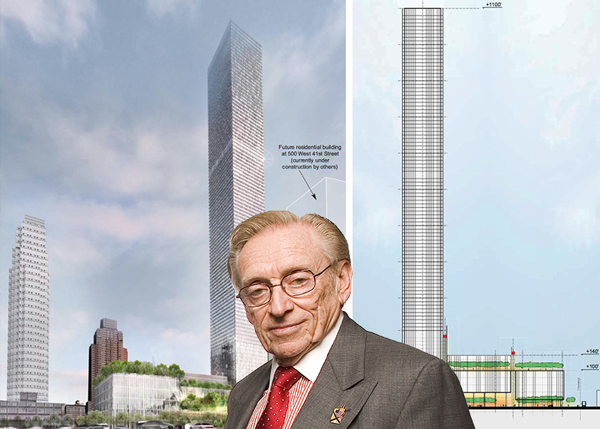
Larry Silverstein and a previous rendering of 520 West 41st Street
5) 520 West 41st Street, Manhattan In August, Silverstein Properties ditched plans for a 1,000-foot condominium tower on the Far West Side. Instead, the developer proposed a 723-foot-tall building at 521 West 41st Street, which will feature 547,718 square feet of residential space, with another 63,000 square feet of commercial space, according to DOB filings. Silverstein purchased the site — formerly home to a Mercedes-Benz dealership — in 2015 for $115 million.
6) 201 East 125th Street, Manhattan Earlier this month, the Richman Group filed plans for a 19-story apartment building in East Harlem. The project’s 404 apartments will stretch out across 359,479 square feet, and an additional 60,732 square feet will be set aside for commercial use, according to DOB filings. Apartments will average about 890 square feet, meaning they’re likely going to be rentals.
See more 2017 year end reviews here
7) 92-23 168th Street, Queens Yet another large-scale development was proposed for Jamaica in August. Omni New York, led by Eugene Schneur and Mo Vaughn, filed plans for a 412,862-square-foot mixed-use building that will feature 389 affordable apartments. Omni was hired by the city to develop the site. Other large projects in the area include BRP Properties’ $400 million Jamaica Station development and the Chetrit Group’s planned four-building complex on the site of the shuttered Mary Immaculate Hospital.
8) 250 Euclid Avenue, Brooklyn Affordable housing developer Phipps Houses is building a 400-plus unit residential project at 250 Euclid Avenue in the Cypress Hills section of East New York. The building is expected to span nearly 400,000 square feet and to include more than 20,000 square feet of ground-level retail.
9) 420 Albee Square, Brooklyn What was initially slated to be Brooklyn’s tallest residential tower is now expected to be a 36-story office tower. In September, JEMB Realty filed plans for a 385,457-square-foot office building at 420 Albee Square, which it’s calling “One Willoughby Square.” The developer initially proposed a 678-foot-tall tower for the site but then shrunk the project to 290 feet in March 2015. In November 2015, JEMB announced that the tower would instead by dedicated to office use, the first ground-up office development to hit Brooklyn in decades. Forest City New York is also a partner on the project.
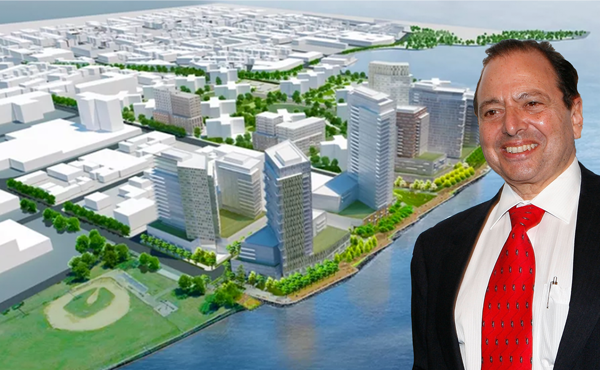
Rendering of Hallets Point complex and Douglas Durst
10) 26-40 First Street, Queens With 421a back in place, the Durst Organization moved forward this year with its seven-building complex on Astoria’s waterfront, known as Hallets Point. In April, the developer filed plans for two mixed-use buildings. The larger of the two, 26-40 First Street, will span 349,470 square feet and will have 358 apartments. The smaller one, 26-02 1st Street, will span 269,346 square feet. Most of the project — with the exception of the first tower — was momentarily halted in early 2016 following the expiration of 421a. The tax break was revived in April, paving the way for construction on the other buildings to resume. Data analysis by Lucas McGill and Adam Pincus




